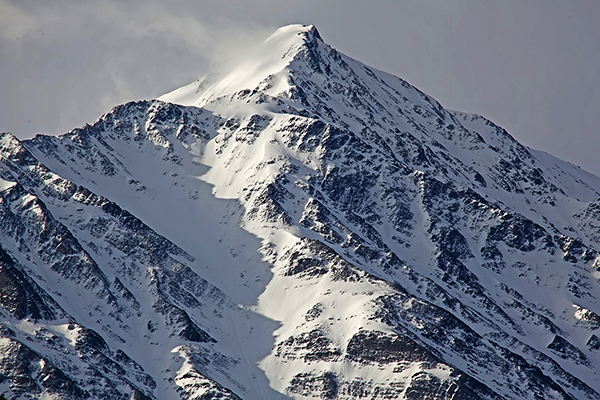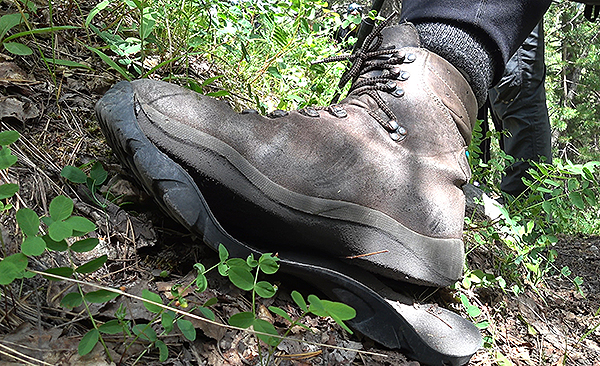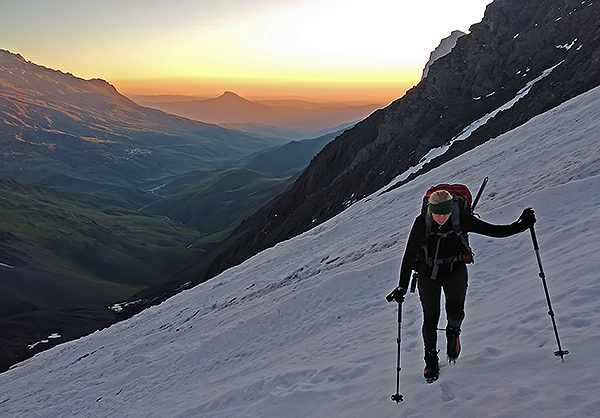FAQ
- Bolivia climbing questions
-
Mallorca island and rockclimbing
- What are main specifics of rockclimbing trip to Mallorca
- Mallorca island impressions
- Rockclimbing safety Spain
- Mallorca climbing accommodation
- What season is possible for rockclimbing in Mallorca
- Transport accessibility of climbing sectors in Mallorca
- Active vacation in Mallorca
- Saint Anthony night in Mallorca
- Peru climbing questions
- Gear reviews
-
Safety in the mountains
- How NOT to climb the summit?
- Mountain navigation
- At the limit of possibilities
- Mountain thunderstorm
- Solo ascents and mountain trips alone
- Mutual responsibility in mountaineering
- Safety illusions in the mountains - a rope
- Independent team of two
- Mountain troubles
- Psychological problems in the mountains
- Health in the mountains
-
Elbrus questions
- Elbrus climbing gear
- Climbing Elbrus with children?
- Mount Elbrus location?
- Elbrus logistics
- How to get to Mount Elbrus?
- Elbrus German airfield?
- Elbrus difficulty grade
- 5 points beginner must know about Elbrus
- How to prepare for Elbrus?
- Are there avalanches on Mount Elbrus?
- Climbing Elbrus solo?
- Seasonality of climbing Mount Elbrus
- How much time climbing Elbrus takes?
- Clothes for Mount Elbrus?
- Pressure at the top of Elbrus?
- Elbrus air temperature
- Elbrus sightseeing
- How much to climb Elbrus
- Gear questions
- Mountaineering questions
- Mountain climbing training
-
Rockclimbing questions
- Rockclimbing gear
- How to choose your first rockclimbing shoes
- The hand power in roclcimbing
- What is Rockclimbing tours
- Non olymnic rockclimbing
- What is rockclimbing?
- Where do you climb?
- Where and when we organize our rockclimbing programs?
- What is rockclimbing?
- Rockcliming program class?
- Climbing motivation
- Horse riding tours
- Iceclimbing questions
-
Questions on the alpine programs
- What to climb in Morocco?
- Weekend summit climb
- Georgia 2023
- Pico Aneto - what is that mountain?
- Mountain programs format
- Mountain climbing food ration
- Queries on the alpine program climbing Mount Bazarduzu
- Queries on the Kamchatka alpine program climbing
- What is combined program?
- What is sightseeing program?
- What is pilot program?
- What programs you have of the medium complexity level?
- Basic expedition rations
- Prices for the mountain climbing programs
- Queries on the Mountain Course in Adyl Su valley
- Program complexity?
- Questions about MCS AlexClimb
- Questions related to trekking programs
Queries on the alpine program climbing Mount Bazarduzu
Description of the MCS AlexClimb mountain program - Climbing Mount Bazarduzu
Often questions on the alpine climbing program Mount Bazarduzu.

Question 1. How difficult is Mount Bazarduzu climbing program, and what technical difficulties will the participants have to face?
Answer: This alpine climbing program is of the initial level of complexity, in fact, apart from the altitude factor, there are no objective difficulties on this program - the route does not involve any climbing or overcoming difficult terrain. However, some sections of the route require coordination - for example, the section before going to the camp 3500 - the traverse of a rather steep scree slope - requires special care when passing.
Question 2. What are the risks participants undertake while climbing Mount Bazarduzu?
Answer: As this program completely belongs to the category of classical alpine climbing programs, the risks on this program are quite typical. First of all, this is the likelihood of the complications with the weather conditions and the resulting problems - you can get freeze, get wet, catch a cold, get lost, etc. These risks, if possible, are compensated by the correct tactical leadership of the program and careful selection of the high-quality personal equipment.
In addition, there is some not very high avalanche danger on the upper part of the ascent route to Mount Bazarduzu by the west ridge. Especially after heavy snowfall, the part of the route from the upper camp 3500 to the saddle of the pass can be avalanche-prone. This risk is compensated by the correct choice of the ascent and descent route and correct time of ascent. Or refuse from the climb in case of unexpectedly difficult weather conditions.
Question 3. Approximatewly, how much will the backpack wheight and how long I will have to carry it?
Answer: Autonomous climbs (away from the Base Camp) on this program do not exceed the length of 2-3 days. This means that the main part of the load - food, gas which is approximately 800-900 grams per day, will not exceed 3.5 kg. In addition, communal equipment is distributed among the participants, which on this program consists mainly of the camping gear — tents and kitchen utensils — this is another 3-4 kg for each participant. Thus, with a careful approach to picking a set of the personal equipment and clothing, the final weight of your backpack can be in the range of 20-22 kg, which is more or less comfortable weight to carry for a normal adult.
Daytime distance to go with backpack usually do not exceed 4-5 hours of not very intensive walk - the route is divided into several sections in order not to overload the participants with excessive load.
Question 4. My old climbing shoes that my grandfather gave me after returning from the World War I – are they OK for the Mount Bazarduzu climbing program?

Ответ: Yes, they will suit, however, in this case, you should stock up with some scotch, wire, awl, fishing line and a large tube of glue because there is no worse problem on the route than to be left without shoes. Under certain conditions, a torn shoe or a broken sole can lead to much more serious consequences than personal inconveniences - for example, a serious slowdown in the overall pace of the group, failure of the schedule, going beyond the safe time interval on the route.
So, the recommendation is to take the selection of your shoes with maximum responsibility. Speaking seriously, there should be no doubt about the quality and durability of the shoes for the alpine climbing program - shoes are a very important element of equipment. On average, alpine climbing shoes should not be older than 2-3 years and have no mechanical damage and repairs. Old shoes are good for weekend trips, but for a serious mountain hike or climb it is strongly not recommended to save money on your comfort and safety
Question 5. Which facilities are provided for the participants of the Mount Bazarduzu climbing program?
.jpg)
Answer: As the climbing program of Mount Bazarduzu is held in a rather inaccessible and wild mountainous region of Dagestan, where the omnipresent tourist service has not yet reached, you shouldn’t rely on any facilities - there are no hotels and shelters on the route, the base camp close to Kurush village is organized in the tents. With certain domestic inconveniences, the lack of service has its own advantages of which the main is the virginal purity of these mountains, the complete autonomy of the route, the opportunity to get the most vivid impressions of a completely independent ascent.
At the same time, the presence of an inhabited village close to the starting point of the route makes it theoretically possible to organize an overnight stay in a private house and receive help in case of unforeseen complications. However, in the basic version of the program, the use of the infrastructure of the village of Kurush is not supposed even in the case of persistent invitation of the local people.
As the result of the Caucasian people hospitality well known for a long time - the generosity and hospitality of the locals will make you unfit for any physical exercise, and your mountaineering in Dagestan may end at this point. So, we will show firmness and austerity, we will wash in the river and cook our food on the camp burner.
Answer 6. What are the requirements for the physical preparation of the participants?

Answer: Details about the training and preparation for the mountain ascents of the various levels of complexity can be found in my article on this issuehttp://www.alexclimb.com/category/kakgotovitsyakgoram
The actual requirements for the physical fitness for the climbing of Mount Bazarduzu are within the limits of the standard norms for practicing any kind of non-professional sports and outdoor activities. On this program, you will need to be able to walk for a quite long time, have physical stamina for daily 6-8 hour moving over the rugged terrain, and have overall coordination for movement without a trail along moderate steep slopes and snow.
Practically, your ability to run a distance of 5 km at any pace, pull up at least once and cross the creek along a shaky bridge - combined with the absence of medical contraindications to intense physical load it's enough. Neither special climbing training, nor a 100 km trail races and other extreme sports are required for climbing Mount Bazarduzu. The program is very comfortable physically, without serious technical difficulties and a long stay at the critical altitudes.
Question 7. What are the general requirements for the personal equipment?
The answer to this question is fully covered in an article on the selection of the equipment for the programs of this level of complexity: http://www.alexclimb.com/category/snaryazheniedlyaalpinistskihprogramm
Question 8. Dagestan is considered a criminally unfavorable region, is it safe to go there?
Answer: As for the danger level to the tourists in the regions of the North Caucasus, many ridiculous rumors have been invented, which, for the most part, are based either on the very remote historical events or on the prejudices of the people who have no basis for such statements. Today, the criminal situation in the North Caucasus regions does not go beyond the general background of the Russian Federation, and it can be said that more dangerous for the tourists are not remote regions of Dagestan, Chechnya, Ingushetia, but the promoted tourist locations like Elbrus or Sochi, where, due to the crowds of tourists, the probability of unlawful encroachment, deception and fraud is higher.
And far from the popular resorts one can find a lot of the true hospitality, human simplicity and spiritual generosity which have been preserved from the ancient times. In fact, remote areas of the North Caucasus are much safer in terms of the crime than even Moscow and St. Petersburg.
Question 9. Is the program of climbing Mount Bazarduzu better than the usual climbing programs of Elbrus or Kazbek?

Answer: Better or worse are very subjective concepts. If you like a crowd of people, the snowmobiles and ratracs darting past, the hotels mushrooming around, shelters and inevitable heaps of garbage - then you can choose the route according to its high popularity. Then you can safely sign up as the 301st member to the team on Elbrus or stand in a line to Mount Kazbek, get ready to swallow dust on the highway to the top of Kilimanjaro or even dream of crawling over the heads to the top of Everest. However, if you are not like everyone else and not a consumer of low quality goods, but look in the mountains for peace, tranquility, purity - then your choice should be done using the other search criteria.
As applied to Bazarduzu, it should be noted that mountaineering in Dagestan is very poorly developed, the mountains stand proudly in their purity, there are very few people or no people at all, and the hospitality of the local population is not turned into a commercial offer. But you will not be able to buy beer and vodka at every corner, or it won’t be possible to go to the sauna with the accompanying set of intim services, and so on through the list.
Question 10. What time is the best for climbing Mount Bazarduzu?
Answer: From a practical point of view, if you set the task to get to the summit - the best time starts from the mid-July and lasts until the end of September. At this time, winter snow does not remain even on the top of the mountain. From mid-July, climbing Mount Bazarduzu turns into a monotonous trampling of the long scree trail. At this time, the probability of the complications with the weather is minimal and the condition of the route, in general, is the most favorable for the ascent.
From the aesthetic point of view - the most beautiful time is June, while the majestic dome of the mountain is covered with snow, which makes climbing much more beautiful - especially at dawn and dusk, when a snow-white peak reflects the light of a low sun and gradually turns into all colors - from scarlet to purple. In June, the state of the route is more unpredictable and the climbing of Mount Bazarduzu requires some tactical ingenuity.
However, for maximum enjoyment of the route June is most favorable, since with a rather high probability of successful ascent, the mountains covered with snow looks much more interesting than without it in later months. And from an extreme point of view, winter is the time of the most desperate conditions for climbing Mount Bazarduzu.
In winter, the ascent can be accomplished for its entire length on the skis along with the interesting descent, but this topic does not intersect with the classical form of mountaineering, about which this article is written, therefore I will just designate this possibility as an existing one.
Text — Alexey Trubachev, founder of the MCS AlexClimb mountaineering and climbing school.

Our Principles
AlexClimb Rule #1 - Safety First
From the very beginning of our activity, here nearly 16 years, the first Principle of work of School of mountaineering and rock-climbing of MCS AlexClimb is the Safety Priority. On the basis of this Principle all process of training is based, all programs and rounds are developed and carried out only within this main principle. We consider that at professional approach to development of programs, at personal discipline and correctly put motivation - occupations by mountaineering and rock-climbing are COMPLETELY safe. And from the return - all troubles and accidents in our sport come from nonprofessionalism, from ignorance or neglect by elementary standards of safety, from irrational motivation, from revaluation of own forces and opportunities. All these prerequisites we COMPLETELY EXCLUDE in our work - ours Rock-climbing, Ice climbing and Mountaineering are based on one Principle - the Safety Priority. In rock-climbing, mountaineering and ice climbing, the Priority of Safety of MCS AlexClimb-is your personal security and comfort irrespective of, than we are engaged - we train muscles and we work technology of the movement in the sports hall and on the rock climbing wall, we make the way through snowstorm to top or we relax on golden sand of the Caribbean beach after hot day of trainings on rocks. The Safety priority - the main credo of School of mountaineering and rock-climbing of MCS AlexClimb.
AlexClimb Rule #2 - Leave No Trace
Closely interacting with Nature, working with the active programs in mountains, woods, lakes and rivers, we perfectly understand the importance of carefull and respectfull bahavior towards the Nature, for its resources. From the very beginning of our outdoor-activity we adopted rules of Leave No Trace technique - the standard of behavior of the person accepted in all the civilized world in relation to environment and especially - to the wild nature. After all on the relation of people to the nature near which they exist, itself can draw dalekoidushchy conclusions on the relation of these people to... Where and as we didn't travel - we don't reserve any garbage, we try to reduce whenever possible our influence on environment to a minimum. We clear earlier zagryazyonny tourist parking of the left garbage, we take out and we take out to utilization places that to us other people left there. We consider that only thus, at personal individual consciousness of each citizen, each tourist, climber or autotraveller, we will be able to keep the nature surrounding us in its state, natural, suitable for life, - in it pledge of the healthy future for ourselves and our children.





